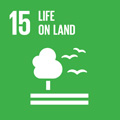- Docente: Maria Giovanna Belcastro
- Credits: 6
- SSD: BIO/08
- Language: Italian
- Moduli: Maria Giovanna Belcastro (Modulo 1) Cristina Giuliani (Modulo 2)
- Teaching Mode: Traditional lectures Traditional lectures (Modulo 1) Traditional lectures (Modulo 2)
- Campus: Bologna
-
Corso:
Second cycle degree programme (LM) in
Biodiversity and Evolution (cod. 5824)
Also valid for Second cycle degree programme (LM) in Archaeology and Cultures of the Ancient World (cod. 8855)
-
from Mar 04, 2025 to May 08, 2025
-
from Apr 16, 2025 to Jun 05, 2025
Learning outcomes
At the end of the course, the student acquires knowledge about human evolution. In particular, the student will be able to know macro and micro evolutionary processes through the study of fossil evidence, genetic variability, cultural manifestations and past and modern human adapation. In particular, the student will be able to: understand the evolutionary and adaptive aspects of human biodiversity; analyze the biodiversity of human remains; use bioindicators for the study of intra-and inter-population variation.
Course contents
The course consists of two modules:
Human evolution and Human biodiversity and Environment.
The module Human evolution (module 1) precedes that of Human biodiversity and Environment (module 2).
MODULE 1
The History of human evolution provided by the study of the fossil record taking into account the environmental context of their recovery.
- Human evolution: false myths and current research directions
- Methods of studying biological variability in the fossil record
- Specific human evolutionary traits: bipedalism and encephalization
- Neanderthals and Homo sapiens
- Climatic transitions during the Pleistocene and Holocene and cultural transitions (Paleolithic, Mesolithic, Neolithic)
- Rethinking the Anthropocene
News and critical review of the scientific literature in order to understand the continuous process of revision of the framework of the human evolution.
MODULE 2
- Modern human biodiversity and the history of the concept of “race"
- Study of Homo sapiens dispersal and peopling by methods of molecular anthropology
- Human ecology, human population biology and relationship with the environment
- Human bio-cultural evolution and gene-culture coevolution
- Epigenetic variability and human biodiversity
- Genes, evolution of human traits and functional studies (example of the language gene FOXP2)
- Evolution and biodiversity in human life cycle traits
Readings/Bibliography
Module 1
Slides of the lessons and scientific papers will be provided.
Some web sites with updated and reliable information:
http://www.becominghuman.org/
http://humanorigins.si.edu/
http://pikaia.eu/category/argomenti/antropologia/
Govoni P, Belcastro MG, Bonoli A, Guerzoni G. (in uscita settembre 2024) - Ripensare l'Antropocene. Oltre natura e cutlura. Carocci editore.
MODULE 2
PDF papers and chapters from the following texts will be provided to the students:
- Sara Stinson • Barry Bogin • Dennis O’Rourke • "Human Biology: an evolutionary and biocultural perspective (second edition)”
- Toomas Kivisild • Chris Tyler-Smith • Matthew Hurles • Edward Hollox • Mark A. Jobling • “Human Evolutionary Genetics (II edition)”.
For both the modules and for a general framework it is suggested the use of the "Manuale di Antropologia. Evoluzione e biodiversità umana (a cura di Luca Sineo, Jacopo Moggi Cecchi), 2022, Utet Università, 640 pp., 27,00 €".
Teaching methods
Frontal lessons.
Assessment methods
The exam consists of a written test with open questions and a multiple answer.
The exam consists of a joint written test for both the modules (MODULE 1 and MODULE 2) with multiple choice questions and open questions.
The time available to the student for the written test is 60 minutes. During the test it is not allowed to use support material such as: textbooks, notes, computer supports.
The maximum score, providing all correct and complete answers, is 30 cum laude.
The test is passed with a minimum score of 18/30.
Teaching tools
PC and video projector
Office hours
See the website of Maria Giovanna Belcastro
See the website of Cristina Giuliani
SDGs




This teaching activity contributes to the achievement of the Sustainable Development Goals of the UN 2030 Agenda.
